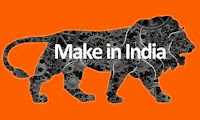India Electronics and Semiconductor Association (IESA) concluded IESA Vision Summit 2016, its annual industry leadership conclave, with an Action Plan for achieving the $400B ‘Make in India’ ESDM opportunity. The Action plan constitutes of 4 components - Talent Development, Strengthen Startup Ecosystem, Industry-Academia involvement and IP Creation.
Chief Guest for the occasion, Smt. Nirmala Sitharaman, Hon’ble Minister of State (Independent Charge) for Commerce & Industry, Govt. of India said, “The industry has a fairly big challenge to meet. There is lack of balance between demand and supply of electronics in India and this is a serious concern. Electronics is the third biggest import after crude oil and gold. There are only 3,500 electronics manufacturing units and therefore the need to set up more units in India for reaching zero import. The National Electronics Policy calls for $100Bn investments in this sector, which will result in 28 Mn jobs. But, between 2000 and 2014-15, we have had only $1.53 Bn coming in this sector while 100% FDI in this sector has been given.”“Manufacturing is the second 5 year plan and the government tried to address it through National Manufacturing Policy. However, presently its contribution to GDP is only 12% - 14%. Services sector contributes to 50% GDP but that is not creating jobs. Manufacturing contribution should be 25% by 2022. We are hopeful National Knowledge Network, National Optical Fibres, Digitization program, Broadband push, will generate more demand and employability. Startups today are looking at application based technology to facilitate the consumer. Space technology, R&D towards core Science, Physics based Science, Earth Science are the areas where India has strengths. Technology needs to come there too,” added Smt. Nirmala Sitharaman.
Guest of Honour, Shri. Krishna Byre Gowda, Minister for Agriculture, Govt. of Karnataka, stated, “Bangalore has been spearheading the growth of ESDM sector, along with creating new opportunities, new avenues and hence, employability. The agricultural markets need to be integrated with the help of technologies. There are 155 markets spread out across Karnataka and commodities are traded at different rates, bringing a disharmony in the ecosystem. However, with technology integration, it is possible to have one unified single online based agriculture market across the country. Presently, technology penetration in agriculture is still at a very low level and it needs to be relooked.”
The government of India has given a clarion call of ‘Make in India’ to boost the nation’s domestic manufacturing sector as well as to produce for the export market. The demand for electronics hardware in the country is projected to touch USD 400 billion by 2020 as indicated in the Task Force Report. This creates a unique opportunity for companies in the ESDM (Electronic System Design & Manufacturing) sector to look at India as their next destination to cater to the domestic Indian demand as well as act as an exports hub.
With ‘Make in India’ wave in the ESDM landscape, the industry realised the need for developing talent in order to address the $400B opportunity. India is a diversified nation and each state has their own priorities. The industry assumes immense requirement for skilled manpower, mostly engineers and hence, necessitate a pool of talent equipped for the electronics ecosystem.
“Today, India trains around 1.5 million engineers per year, more than what the US and China jointly produces. However, 15% of the engineers who graduate, find a job immediately and hence, there is a need for a paradigm shift in the way the various technical courses are structured. It is also essential that the engineering graduates are made trade worthy through collaboration with industries and an exposure to industrial working conditions,” said Vinay Shenoy, Chairman, IESA.
The government’s ‘Make in India’ initiative is projected to make India a preferred manufacturing destination encompassing 25 sectors that includes ESDM, automobiles, chemicals, IT , aviation, design manufacturing, renewable energy and several other sectors that rely heavily on electronics, expanding the opportunities to create employment, purchasing power, spending and supply. As India attempts to become a manufacturing nation, the ESDM start-up ecosystems are uniquely positioned to drive innovation and deliver path-breaking products. Start-ups also have the advantage of being able to focus on niche, cutting-edge technologies while also managing to remain extremely nimble.
IESA, realising the true potential of the startup ecosystem, has been spearheading various initiatives with the industry to identify startups in the electronics and IoT space in order to make them flourish with the required mentorship, incubation and help them to derive their go-to-market strategy and scale their ideas into sustainable businesses.
